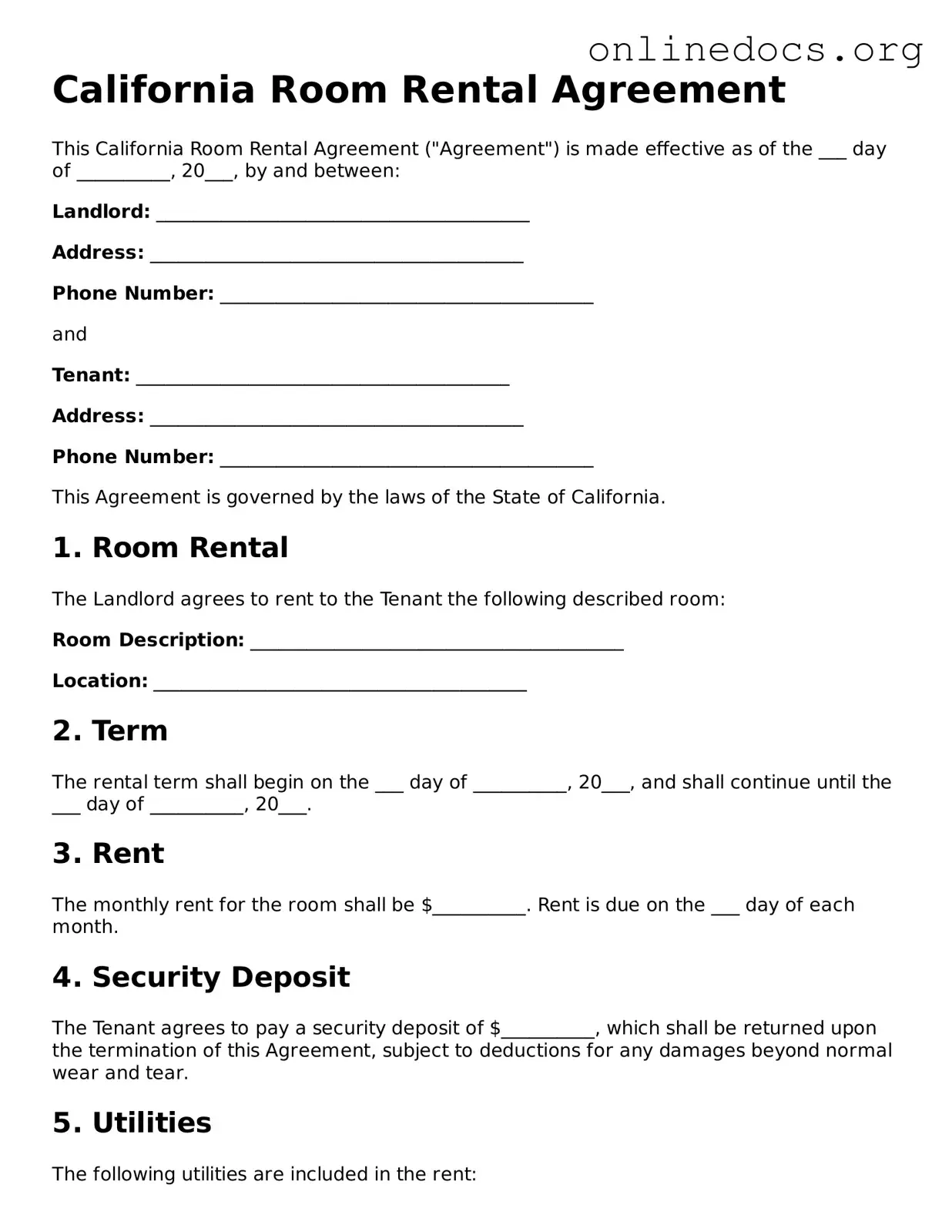The California Room Rental Agreement is similar to a standard lease agreement. Both documents outline the terms under which a tenant can occupy a property. They specify the duration of the tenancy, the rental amount, and the responsibilities of both the landlord and the tenant. While a lease agreement often covers longer terms, the Room Rental Agreement is typically used for shorter stays, making it more flexible for both parties.
The incorporation of various agreements, such as the Rental Application and Rules and Regulations, highlights the importance of thorough documentation in renting processes. For those looking to understand the specifics of lease agreements, resources like legalformspdf.com can provide essential examples and definitions that ensure clarity and compliance for both landlords and tenants.
Another document similar to the Room Rental Agreement is the sublease agreement. A sublease agreement allows a tenant to rent out their space to another individual. Like the Room Rental Agreement, it details the rental terms, responsibilities, and duration. However, the sublease agreement usually requires the original landlord's consent, adding an extra layer of complexity.
The roommate agreement also shares similarities with the California Room Rental Agreement. This document governs the relationship between multiple tenants sharing a rental unit. It typically covers rent payment responsibilities, shared expenses, and house rules. While the Room Rental Agreement focuses on the landlord-tenant relationship, the roommate agreement emphasizes the cohabitation dynamics among tenants.
A rental application form is another related document. This form is used by landlords to screen potential tenants before entering into any rental agreement. It collects personal information, rental history, and financial details. While it does not govern the rental terms, it plays a crucial role in determining whether a Room Rental Agreement will be executed.
The lease addendum is also comparable to the Room Rental Agreement. An addendum is a document added to an existing lease that modifies or adds to the terms of the original agreement. This could include pet policies or changes in rent. Like the Room Rental Agreement, it must be agreed upon by both parties and is legally binding.
Finally, the eviction notice bears relevance to the Room Rental Agreement. While the Room Rental Agreement outlines the initial terms of occupancy, the eviction notice is a formal declaration that a tenant must vacate the premises. It specifies the reasons for eviction and the time frame in which the tenant must leave. Both documents are essential in managing the landlord-tenant relationship but serve very different purposes.
